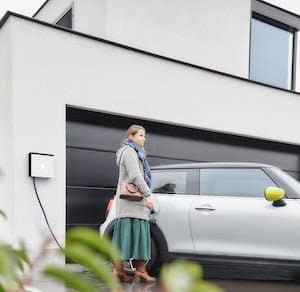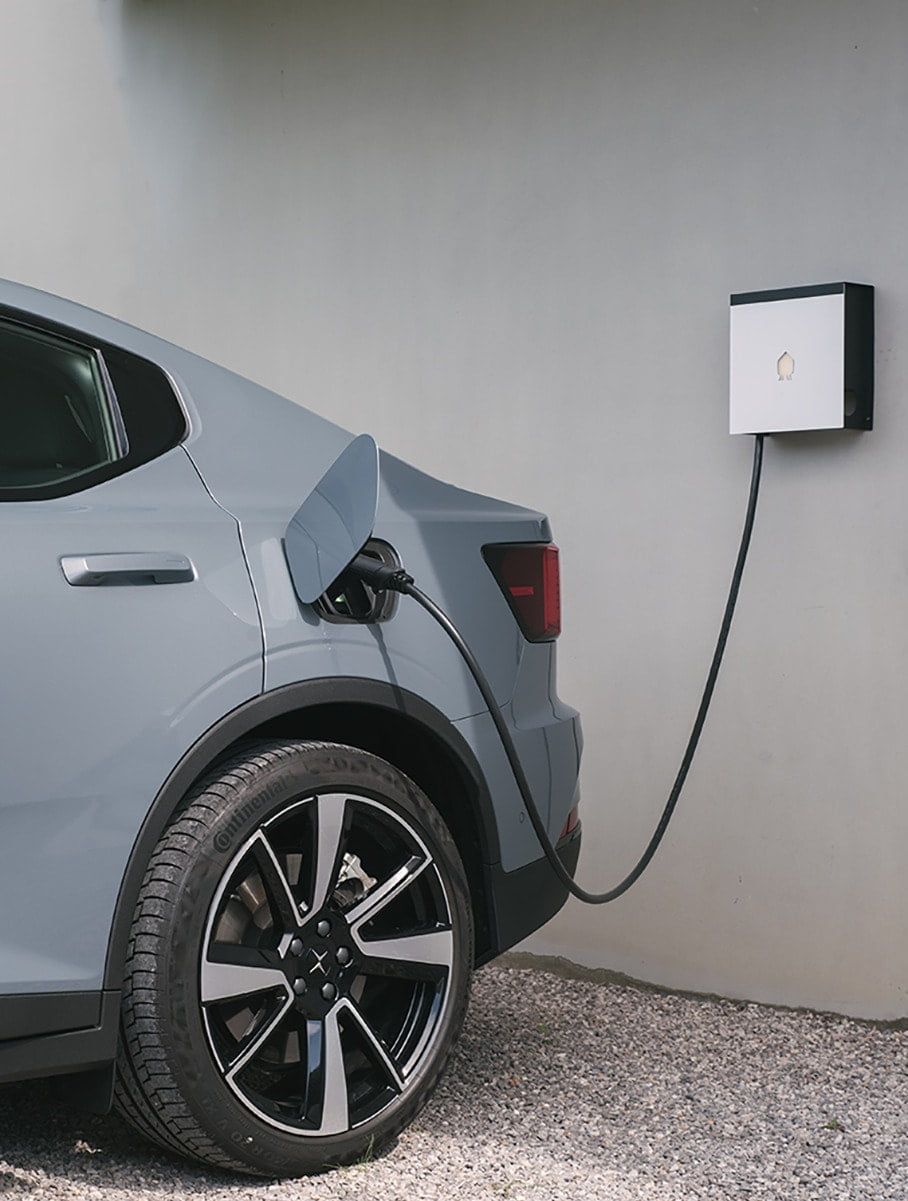Cutting on your energy bills thanks to V2G and V2H.
The breakthrough of solar energy has been nothing short of impressive over the past decade. Moreover, technological evolution ensures that solar energy is used more and more optimally and, therefore, more cost-effectively. Vehicle-to-Grid (V2G for short) and Vehicle-to-Home (V2H) are two important examples of this evolution, with the charging station serving as a central regulator for the energy flows between the electric car, the distribution network, and the home
The yield of solar panels is rising to unprecedented heights thanks to innovation, but this modern form of energy generation has one important disadvantage for private users: the yield pattern is not in sync with the consumption pattern of residents. Solar power is limited in the morning hours, only reaches its maximum just afternoon and then gradually falls back towards the evening hours. For the vast majority of users, this is diametrically opposed to their consumption, with a peak in the morning and the centre of gravity during the evening hours.
The result? Solar panel owners largely put their generated electricity on the grid during the day and use that same electricity grid in the evening to cover their consumption, an inefficient situation. The government tackles this by charging prosumers or grid tariffs, thus they want to stimulate internal consumption of their yield. The growing popularity of home batteries can be part of this. This is a great option to better match yield and consumption. For users of electric cars, however, there is an additional possibility in the form of bidirectional charging via V2G or V2H. This provides them with the possibility to keep their energy bills under control even better.
Bidirectional charging.
The idea behind this innovation is simple. Your electric car has a battery that you either charge at home during the day with your own solar energy or during working hours at the company charging station at a cheaper rate than what you would pay for grey power in the evening during peak hours. Because an EV in 2022 has a battery of a few tens of kWh, there is a good chance that your car has an energy surplus if you plug the car in at home in the evening. We could easily use this energy to relieve the home network (Vehicle-to-Home) or the electricity grid (Vehicle-to-Grid) for a fee, provided that we still have enough energy left in the morning to get to your desired destination without any hassle.
V2G and V2H are on the way.
The technology to steer this in the right direction is in full development. Some brands of electric cars are already equipped with this functionality, but currently, you can only buy a few charging stations that are equipped with this innovation. But there is good news because car manufacturers will soon announce the technical specifications that charging stations must meet to enable V2G and V2H. Smappee fully embraces this evolution and is completely ready for the development of these new types of charging stations.
Still some obstacles for V2G and V2H.
Nevertheless, a certain amount of time will still be needed before this new technology is fully rolled out. For starters, the new types of charging stations contain a lot more technology, such as additional inverters, security, hardware and intelligence to steer the processes in the right direction. That entails a certain additional cost. Most electric cars today are also not yet equipped with vehicle-to-grid or vehicle-to-home functionality. Finally, many will probably opt for the cheaper charging stations without V2G or V2H for the time being. That does not alter the fact that this evolution is very welcome to help shape the electricity grid of the future and to keep it affordable. So it is only a matter of time before the new technology will take hold everywhere. Smappee is ready to go!
Focus on smart charging stations now.
Until then, electric drivers do not have to sit back and wait. By buying a smart charging station – such as those of the Smappee EV Line – they can already use their solar energy optimally. Thanks to their integrated smart energy management technology, Smappee charging stations use solar energy not only for the car but also to control the other devices in the building such as air conditioning, boilers, washing machines, etc. As soon as possible, new charging stations will optimally use the car battery in the same smart way to maximise self-sufficiency.
© Smappee. All rights reserved.


